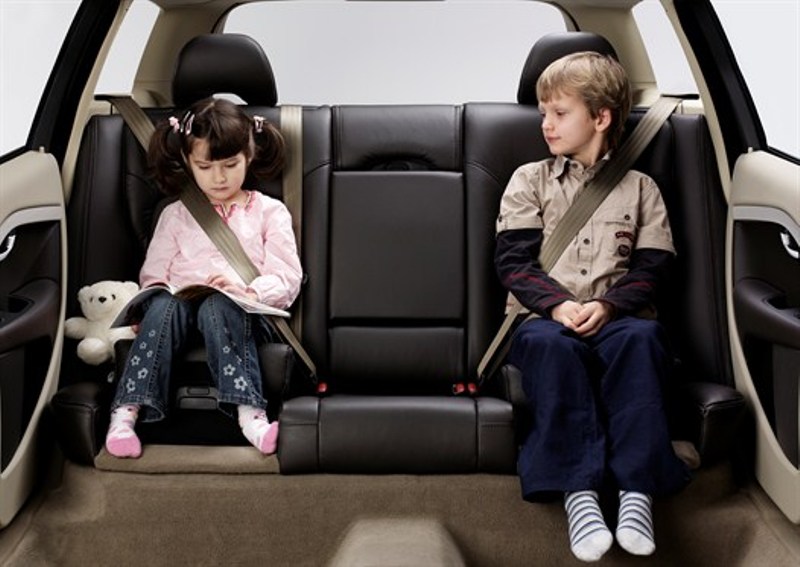The Volvo Car Group has been dedicated to protecting the smallest and most vulnerable car occupants for the longest time and this year Volvo celebrates its 50-year anniversary in working to keep children safe in their cars. This ground breaking work started with the world’s first rear-facing child seat prototype in a PV544 back in 1964 and the latest innovation is an Inflatable Child Seat Concept that is easily tucked away in a small bag when not in use. The differences in anatomy between children and adults form the foundation for Volvo Cars’ child safety developments both in terms of car integrated features and accessories. Children are not small versions of adults, which is why children need special restraints when travelling in cars.
“The basic principle remains the same as fifty years ago. The smallest children must always travel facing the rear until the age of three to four. Older children should use a booster cushion or booster seat that makes sure that the lap belt is correctly fitted over the pelvis,” says Professor Lotta Jakobsson, Senior Technical Specialist at Volvo Cars Safety Centre. Here are some of the most important milestones in Volvo Cars’ child safety history:
1964 First child seat prototype
Inspired by how astronauts travel rearwards, Bertil Aldman, medical doctor and subsequently Professor in Traffic Safety at Chalmers University of Technology, developed the very first child seat prototype. Volvo was closely involved in the development and testing was carried out in a PV544.
1967 Reversible front passenger seat with special child backrest
The first child seat to be sold to customers was created by turning the front passenger seat around. Adding a padded backrest with straps made sure that the rearward-facing child was kept in place. The solution was sold as an accessory for the recently introduced Volvo Amazon.
1972 Volvo’s first rearward-facing child seat
Rearward-facing child seats are designed to support the neck and help spread the force of a frontal impact over a larger area. Frontal impacts are the most frequent and usually the most severe impact situation.
1976 The booster cushion – a world first from Volvo
Children from three to four years and up travel facing forwards using the standard safety belt with a belt-positioning booster cushion. Volvo Cars’ policy is that children should use a booster cushion until they are 140 centimetres tall and ten years old. When using a booster cushion, the child runs an approximately 75 per cent lower risk of being injured compared to being unrestrained.
1990 World’s first integrated booster cushion
The first integrated booster cushion was an ingenious fold down and out version in the rear centre position in the Volvo 960. Double integrated pop-up booster cushions in the outer rear seats were introduced in the Volvo S40 in 1995.
1999 World’s first rearward-facing seat for ISOFIX
The world-first solution for the standardised, car-integrated ISOFIX fittings was actually two rearward-facing seats in one. Both seats – one for infants and one for toddlers up to four years of age – could be fitted in the same ISOFIX frame.
2007 World’s first two-stage integrated booster cushion
Two-stage integrated booster cushions were introduced in the Volvo V70 estate. The two-stage version, with two sitting heights, enables a better belt fit regardless of the child’s size. Child adapted safety belt load limiters were also fitted.
2014 Inflatable Child Seat Concept
The innovation, which is still in the development stage, is easy to install and can be tucked away in a small bag when not in use. This means that the child seat can be easily transferred between cars and the bag even fits in carry-on luggage when flying or travelling.











